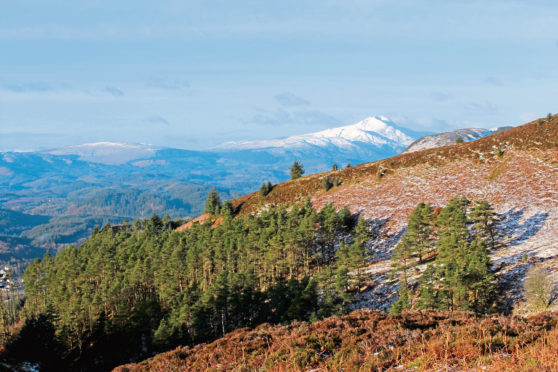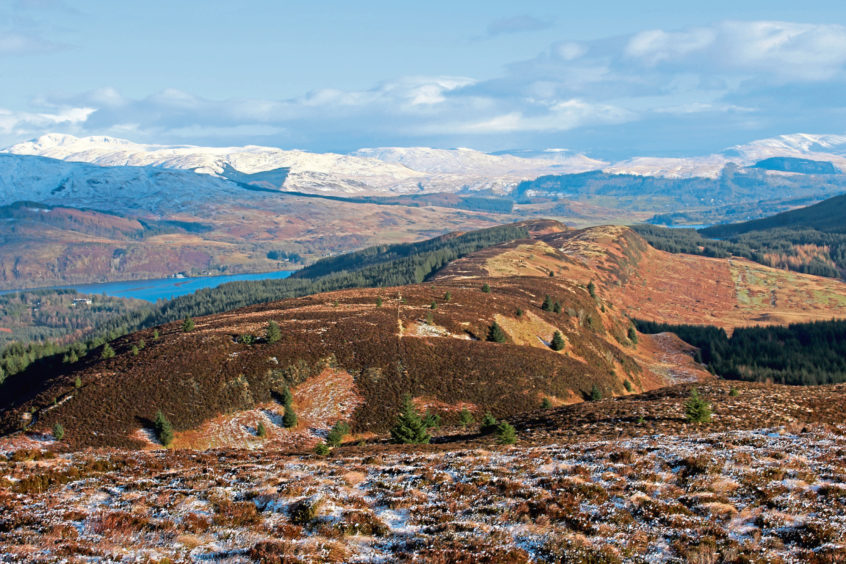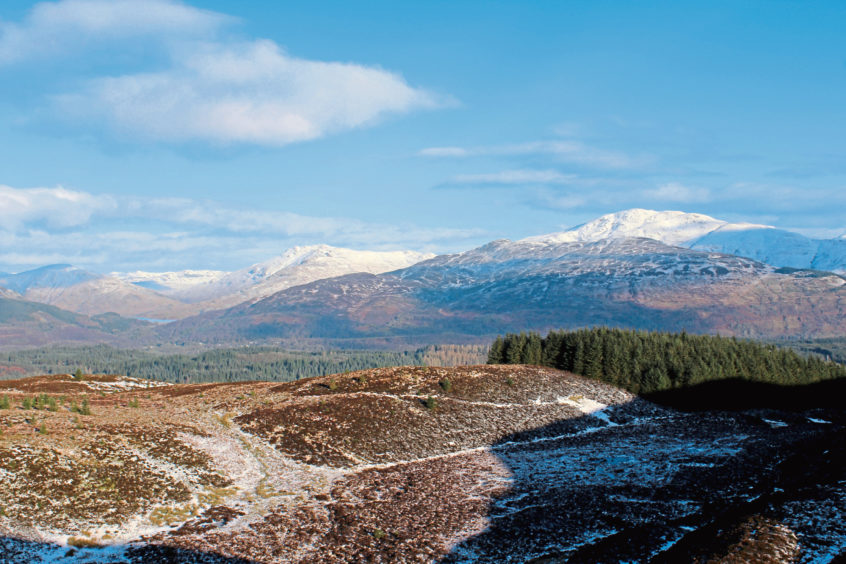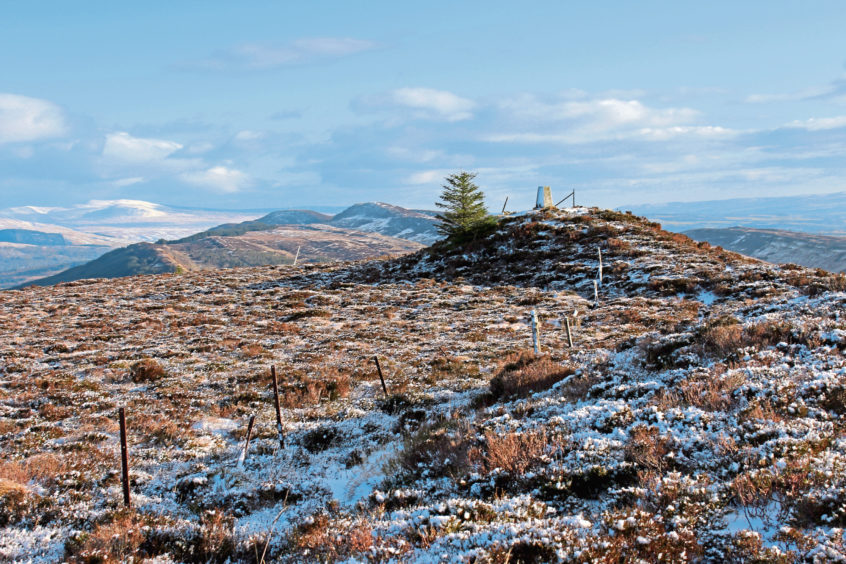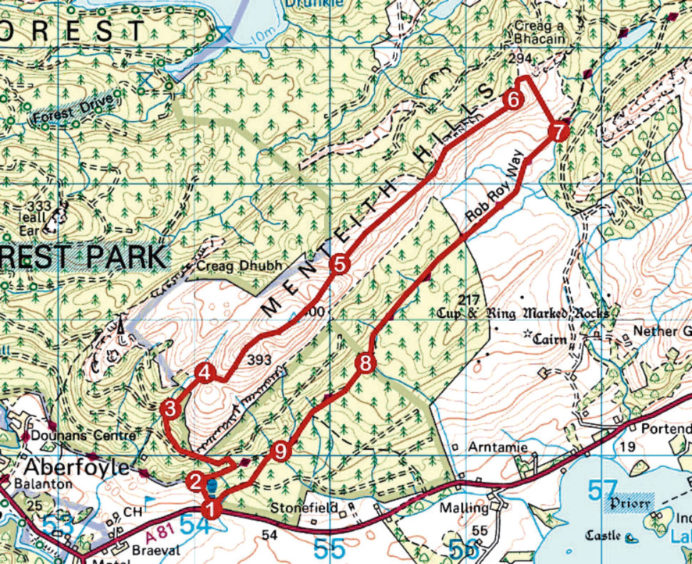Lake of Menteith has the distinction of being just one of a handful of ‘lakes’ in Scotland, the term more commonly associated with bodies of water south of the border.
Lying in the Carse of Stirling it was, until the 19th century, more traditionally known as Loch of Menteith and is sometimes referred to as Loch Inchmahome, a name that early maps show pre-dates both the later lake and loch options.
However, as attractive as it is, with its historic island priory, where, in 1547, at the age of just four years old, Mary Queen of Scots sought refuge, my sights were set on the rugged escarpment to the north.
Clad in pine and larch, the Menteith Hills combine to form a range of low tops bisected by steep wee gullies stretching through the Queen Elizabeth Forest Park, from Aberfoyle, in the west, to Callander, in the east.
The highest point in the west is Craig of Monievreckie, which rises proudly above Aberfoyle, and the ascent from the Forestry Commission car park at Braeval, a mile or so from the village, is steep and requires careful navigation through the plantation.
However, with frequent pauses to check my map, I zig-zagged up paths and tracks and, a little out of puff, eventually emerged unscathed from the trees.
From a gate at the top of the forest, a slender trail climbs through tussocks of grass and heather on to the hill’s southern top, where I enjoyed views west to snow-capped Ben Lomond and north to the peaks of The Trossachs, among them a favourite of mine, Ben Ledi.
There is a bit of a dip between this first hump and the summit and the no nonsense path takes a direct line, dropping sharply into the col before climbing to the trig-point and cairn that crown Craig of Monievreckie.
Below me, the icy waters of Lake of Menteith glistened in the crisp morning sunlight, the sparkling gem in a vista stretching along the valley of the River Forth towards distant Stirling.
The path continues north-east along the escarpment, descending into another fracture in the rock, Bealach Conasgach, beyond which the way is less well-walked, the narrowest of boot lines running alongside a fence.
The straggly wire and loose posts are a useful navigational aid, leading down into shallower Bealach Cumhang, where forestry on the left threatens to impinge upon the otherwise tree-free ridge.
The fence remained my trusty if rusty companion over the final tops but, approaching the end of the line at Bealach nam Beitheag, it must be forsaken for it promptly disappears over crags.
To avoid a potentially perilous scramble, I veered left towards a corner in the plantation ahead before curving right, passing below the steep slabs to meet a wall that I followed down the edge of the forest into the base of the valley.
Here I picked up the Rob Roy Way, a long-distance path running from Drymen to Pitlochry, the route based on the wanderings of Scotland’s notorious cattle rustler and outlaw and doubtless his pursuers.
It is a pleasant saunter, initially over sheep grazing land, back to the confines of the conifers where the path, muddy in places, cuts through the forest, skirting below rough slopes of rock, bracken and spruce, to meet a more robust track leading back to Braeval.
ROUTE
1. Join path to left of route marker posts. Turn left almost immediately and ascend to track.
2. Turn right and ascend track to junction. Go left, ignore track coming in from right, and ascend to junction on brow. Turn right up track.
3. Just before track crosses stream, turn right on slim path ascending through trees to gate. Go through and continue north-east along path.
4. Where path forks, go right and ascend over first top and on to Craig of Monievreckie summit then descend path into Bealach Conasgach.
5. Climb out of bealach and follow fence-line north-east along escarpment.
6. Descend north then east to avoid crags and turn south, descending by wall to base of valley.
7. By gate in wall, turn right and follow Rob Roy Way south-west, entering forest at gate.
8. Join forest road and follow it south-west.
9. Bear left at track junction, leaving Rob Roy Way, and descend to next junction. Go right to car park.
INFORMATION:
Distance: 10km/6½ miles
Ascent: 480m/1580ft
Time: 3-4 hours
Grading: A challenging upland hike over low hills with strenuous ascent early on, the route follows forest tracks and hill paths, rough in parts, over exposed ground. Suitable for fit, experienced hillwalkers. Keep dogs under close control where livestock is encountered
Start/finish: Forestry Commission Braeval Car Park, 1.5km east of Aberfoyle on A81 (Grid ref: NN 549006)
Map: Ordnance Survey 1:50,000 Landranger sheet 57; Ordnance Survey 1:25,000 Explorer sheet OL46
Tourist Information: Aberfoyle iCentre, Main Street, Aberfoyle FK8 3UQ (Tel 01877 381221)
Public transport: First Scotland bus service C11 from Stirling to Aberfoyle
